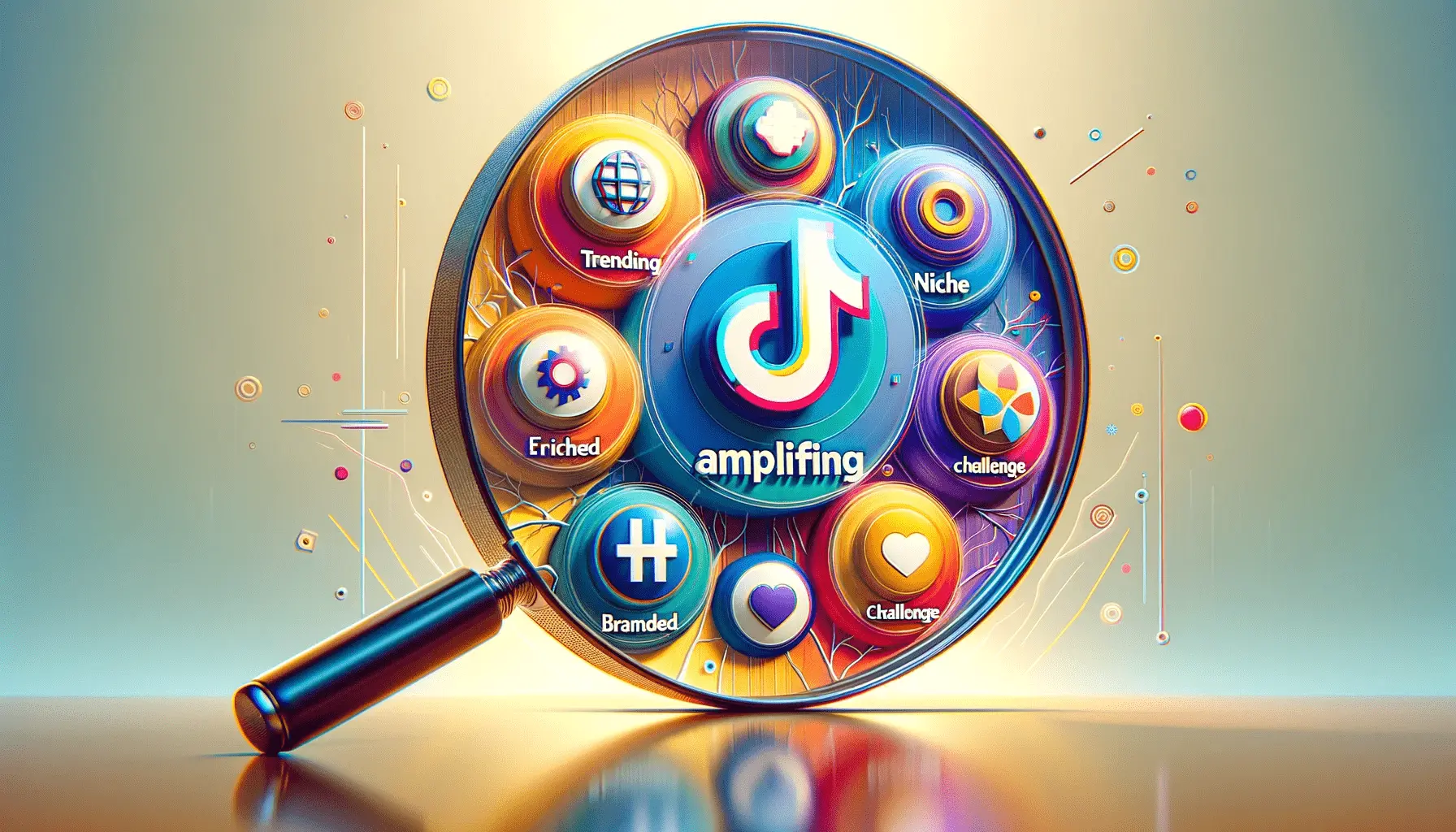Twitter, a dynamic and influential platform, offers a unique opportunity for businesses to expand their audience reach.
With its vast user base and real-time engagement, Twitter stands as a powerful tool in the arsenal of digital marketing.
This article delves into seven strategic approaches to leverage Twitter ads, ensuring that your message not only resonates with your target audience but also amplifies your brand’s digital footprint.
Understanding the nuances of Twitter advertising is crucial for any marketer aiming to enhance their audience reach.
The platform’s ability to segment and target specific demographics, coupled with its real-time nature, makes it an ideal space for tailored and impactful advertising.
Let’s explore these seven strategies to unlock the full potential of Twitter ads.
- Audience Reach: The Foundation of Effective Twitter Ads
- Optimizing Ad Content for Maximum Engagement
- Leveraging Twitter’s Advanced Ad Formats
- Mastering Twitter Ad Targeting
- Utilizing Twitter Analytics for Data-Driven Decisions
- Maximizing ROI with Budget and Bidding Strategies
- Integrating Twitter Ads into Your Overall Marketing Strategy
- Conclusion: Harnessing the Power of Twitter Ads for Maximum Audience Reach
- Maximize Audience Reach with Twitter Ad Strategies: FAQs
Audience Reach: The Foundation of Effective Twitter Ads
Before diving into the mechanics of Twitter advertising, it’s essential to grasp the importance of audience understanding.
Knowing who your audience is, what they like, and how they interact on Twitter sets the stage for a successful ad campaign.
Utilizing Twitter’s analytics tools, you can gain insights into your audience’s demographics, interests, and behaviors, forming the backbone of your ad strategy.
Creating buyer personas based on this data helps in tailoring your messages and targeting options.
This initial step is not just about reaching a large number of people but about reaching the right people.
It’s the quality of the audience, not just the quantity, that drives real engagement and conversion.
Segmentation and Targeting: The Key to Relevance
Once you understand your audience, the next step is segmentation and targeting.
Twitter’s robust targeting options allow you to narrow down your audience to those who are most likely to engage with your content.
You can target based on location, interests, behaviors, and even specific keywords used in their Twitter conversations.
This level of precision ensures that your ads are served to a receptive and relevant audience, thereby maximizing their impact.
For instance, if your product is a fitness app, targeting Twitter users who frequently post about health and fitness, and follow related accounts, will likely yield better results than a broad, untargeted approach.
This strategic targeting not only enhances the effectiveness of your ads but also optimizes your advertising budget.
Effective Twitter advertising begins with a deep understanding of your audience. Tailoring your ads to match their interests and behaviors ensures higher engagement and conversion rates.
Optimizing Ad Content for Maximum Engagement
Crafting compelling ad content is pivotal in capturing the attention of your Twitter audience.
The content of your Twitter ads should resonate with your audience, sparking interest and encouraging interaction.
This involves a blend of creativity, strategic messaging, and visual appeal.
Here are key elements to consider when optimizing your Twitter ad content:
Creative and Engaging Ad Copy
Your ad copy is the voice of your brand on Twitter.
It should be concise, clear, and engaging.
Incorporating strong action verbs and language that resonates with your target audience is crucial.
A clear call-to-action (CTA) should be part of every ad, guiding users on the next steps, whether it’s visiting a website, signing up for a newsletter, or making a purchase.
Utilizing Visuals Effectively
- Images and Videos: Visual content significantly increases engagement on Twitter. Use high-quality images or videos that are relevant to your brand and message.
- Mobile Optimization: With the majority of Twitter users accessing the platform via mobile devices, ensure your visuals are optimized for mobile viewing.
- Consistency in Branding: Your visuals should be consistent with your brand identity, reinforcing brand recognition among your audience.
Testing and Refining Ad Variations
Experimentation is key in finding the most effective ad content.
Test different variations of your ad copy, images, and CTAs to see what resonates best with your audience.
Use Twitter’s analytics to measure the performance of each variation and refine your strategy accordingly.
Remember, the goal is to create ad content that not only captures attention but also aligns seamlessly with your brand’s message and audience’s interests.
Leveraging Twitter’s Advanced Ad Formats
Twitter offers a variety of ad formats, each designed to cater to different marketing objectives.
Understanding and utilizing these formats can significantly enhance the effectiveness of your advertising campaign.
Here’s a breakdown of some of the most impactful Twitter ad formats:
Promoted Tweets
- Definition: Regular tweets that are boosted to reach a wider audience.
- Use Case: Ideal for promoting specific products, services, or events.
- Engagement Focus: Encourages retweets, likes, and replies, increasing overall engagement.
Promoted Accounts
- Objective: To increase the visibility and followers of your Twitter account.
- Targeting: Appears in potential followers’ “Who to follow” suggestions.
- Benefit: Expands your brand’s reach and builds a larger, more engaged audience.
Promoted Trends
- Purpose: To boost visibility for a specific hashtag or topic.
- Placement: Appears at the top of the trending topics list, gaining high visibility.
- Impact: Ideal for launching new products or campaigns, creating buzz and conversation.
Video Ads
- Format: Utilizes video content for a more dynamic ad experience.
- Engagement: Offers higher engagement rates due to the compelling nature of video content.
- Application: Great for storytelling, product demos, or brand narratives.
Twitter Cards
- Functionality: Enhances tweets with media-rich content to drive traffic to your website.
- Varieties: Includes Summary Cards, App Cards, and Player Cards, each serving different purposes.
- Advantage: Increases click-through rates by providing a richer user experience.
Selecting the right ad format is crucial. Consider your campaign goals, target audience, and the type of content you want to promote when choosing the format that best aligns with your strategy.
Mastering Twitter Ad Targeting
Effective targeting on Twitter is not just about reaching a wide audience; it’s about reaching the right audience.
Twitter’s advanced targeting capabilities allow you to tailor your ads to the users most likely to be interested in your product or service.
Here’s how to master Twitter ad targeting:
Demographic Targeting
- Age, Gender, and Location: Tailor your ads based on basic demographic information to ensure they reach a relevant audience.
- Language and Device: Further refine your targeting by considering the language preferences and devices used by your audience.
Interest and Behavior Targeting
- Interests: Target users based on their interests, such as hobbies, favorite entertainment genres, or other Twitter activities.
- Behaviors: Focus on users with specific behaviors, like frequent online shoppers or technology enthusiasts.
Keyword and Hashtag Targeting
- Keywords: Target users who tweet or engage with specific keywords relevant to your brand.
- Hashtags: Reach audiences participating in conversations around particular hashtags.
Custom and Lookalike Audiences
- Custom Audiences: Use your existing customer data to retarget users who have previously interacted with your brand.
- Lookalike Audiences: Expand your reach by targeting users similar to your existing customers, increasing the likelihood of finding new prospects with similar interests and behaviors.
Geotargeting and Event Targeting
- Geotargeting: Tailor your ads to users in specific geographic locations, ideal for local businesses or region-specific campaigns.
- Event Targeting: Capitalize on events by targeting users interested in or talking about specific events, from global sports events to local festivals.
Advanced targeting on Twitter is a game-changer for advertisers. By precisely targeting your audience, you not only increase the relevance of your ads but also improve your return on investment.
Utilizing Twitter Analytics for Data-Driven Decisions
Twitter Analytics plays a crucial role in understanding the performance of your ad campaigns.
By analyzing data, you can make informed decisions to optimize your strategies for better results.
Here’s how to leverage Twitter Analytics effectively:
Tracking Engagement Metrics
- Engagement Rate: Monitor likes, retweets, replies, and clicks to gauge how well your audience is interacting with your ads.
- Impressions: Keep track of the number of times your ad is viewed, helping you understand its reach.
Understanding Audience Insights
- Demographics: Analyze the age, gender, location, and language of your audience to refine future targeting.
- Interests and Behaviors: Gain insights into what your audience likes and how they behave online to tailor your content and targeting.
Conversion Tracking
- Set up conversion tracking to measure the actions users take after interacting with your ads, such as visiting your website or making a purchase.
- Use this data to determine the return on investment (ROI) of your campaigns and identify areas for improvement.
Comparative Analysis
- Compare the performance of different ad campaigns to identify what works best for your brand.
- Analyze trends over time to understand the long-term impact of your Twitter advertising efforts.
Adjusting Strategies Based on Data
Use the insights gained from Twitter Analytics to adjust your ad strategies.
Whether it’s tweaking your ad copy, changing your targeting parameters, or experimenting with different ad formats, data-driven decisions can significantly enhance the effectiveness of your campaigns.
Twitter Analytics is a powerful tool that provides valuable insights into your ad campaigns. By understanding and acting on this data, you can continuously improve your Twitter advertising strategies for maximum impact and ROI.
Maximizing ROI with Budget and Bidding Strategies
Effective budget management and bidding strategies are essential for maximizing the return on investment (ROI) of your Twitter ad campaigns.
Understanding how to allocate your budget and bid effectively can make a significant difference in your campaign’s success.
Here are key strategies to consider:
Setting a Realistic Budget
- Determine your overall marketing budget and allocate a portion specifically for Twitter ads based on your campaign goals.
- Consider the cost of different ad formats and targeting options to make informed budgeting decisions.
Understanding Bidding Options
- Twitter offers various bidding options, including automatic bidding, maximum bidding, and target cost bidding.
- Choose a bidding strategy that aligns with your campaign objectives and budget constraints.
Optimizing Bids for Audience Reach
- Adjust your bids based on the competitiveness of your target audience and the time of day or week.
- Monitor the performance of your ads and adjust bids to improve reach and engagement.
Cost-Effective Ad Scheduling
- Schedule your ads during times when your target audience is most active on Twitter for maximum impact.
- Use Twitter Analytics to identify peak engagement times and adjust your ad scheduling accordingly.
Regular Monitoring and Adjustment
Continuously monitor your ad spend and performance.
Be prepared to adjust your budget allocation and bidding strategies based on the results you are seeing.
Regular monitoring allows you to optimize your spend for the best possible ROI.
Neglecting the importance of budget and bidding strategies in Twitter advertising can lead to inefficient spending and suboptimal campaign performance. Always align your budgeting and bidding with your campaign goals and audience insights.
Integrating Twitter Ads into Your Overall Marketing Strategy
Twitter ads should not exist in isolation but rather be a part of a cohesive marketing strategy.
Integrating your Twitter advertising efforts with your overall marketing plan ensures consistency in messaging and maximizes the impact of your campaigns.
Here’s how to effectively integrate Twitter ads into your broader marketing strategy:
Aligning with Marketing Objectives
- Ensure that your Twitter ad campaigns align with your overall marketing objectives, whether it’s brand awareness, lead generation, or sales.
- Use Twitter ads to complement and reinforce the messages conveyed through other marketing channels.
Consistent Brand Messaging
- Maintain a consistent brand voice and visual style across all marketing platforms, including Twitter.
- Ensure that your Twitter ads reflect the same values and messaging as your other marketing materials.
Cross-Channel Promotion
- Leverage Twitter ads to promote content from other channels, such as your blog, YouTube channel, or email newsletter.
- Use Twitter to drive traffic to your website or landing pages, creating a seamless user journey across platforms.
Measuring Cross-Channel Impact
- Use analytics tools to measure the impact of your Twitter ads on your overall marketing goals.
- Analyze how Twitter advertising influences other marketing channels and vice versa.
Adapting to Audience Feedback
Pay attention to the feedback and engagement you receive on Twitter and use these insights to inform your broader marketing strategy.
Adapt your approach based on what resonates with your audience on Twitter, ensuring that your marketing efforts are always audience-centric.
Integrating Twitter ads into your overall marketing strategy enhances the coherence and effectiveness of your marketing efforts. By aligning your Twitter campaigns with your broader marketing goals, you create a unified brand experience for your audience.
Conclusion: Harnessing the Power of Twitter Ads for Maximum Audience Reach
In the realm of digital marketing, Twitter stands out as a potent platform for expanding audience reach and enhancing brand visibility.
The strategies discussed in this article provide a comprehensive roadmap for leveraging Twitter ads effectively.
By understanding your audience, optimizing ad content, utilizing advanced ad formats, mastering ad targeting, leveraging analytics, and integrating Twitter ads into your overall marketing strategy, you can significantly amplify your brand’s presence on this dynamic platform.
Key Takeaways for Maximizing Twitter Ad Effectiveness
- Deep Audience Understanding: The foundation of any successful Twitter ad campaign lies in a profound understanding of your target audience.
- Strategic Content Optimization: Crafting engaging and relevant ad content is crucial for capturing audience attention and driving engagement.
- Diverse Ad Formats: Utilizing various Twitter ad formats allows for creative flexibility and targeting precision.
- Advanced Targeting Techniques: Effective targeting ensures that your ads reach the most receptive audience, enhancing campaign efficiency.
- Data-Driven Insights: Leveraging Twitter Analytics provides valuable insights for refining strategies and maximizing ROI.
- Integrated Marketing Approach: Incorporating Twitter ads into a broader marketing strategy ensures consistency and reinforces overall marketing objectives.
As we navigate the ever-evolving landscape of social media advertising, Twitter’s unique capabilities in audience engagement and real-time interaction offer a valuable opportunity for businesses.
By implementing these seven Twitter ad strategies, you can maximize audience reach, creating a significant impact in the digital space.
Remember, the key to success lies in a balanced approach that combines creativity, strategic planning, and data-driven decision-making.
Embrace the power of Twitter ads, and watch your brand soar to new heights in audience engagement and brand recognition.
Enjoyed the article? Let its author handle your social media ads. Visit our service page to get started!
Maximize Audience Reach with Twitter Ad Strategies: FAQs
Delving into the world of Twitter advertising can raise numerous questions. To help you navigate this landscape, here are some frequently asked questions about maximizing audience reach with Twitter ad strategies.
Successful Twitter ads combine concise, engaging copy, targeted audience segmentation, compelling visuals, and clear calls-to-action. Balancing these elements effectively maximizes audience engagement.
Effective targeting involves understanding your audience’s demographics, interests, and behaviors. Utilize Twitter’s advanced targeting options like geotargeting and interest-based filters for precision.
Twitter offers several ad formats, with Promoted Tweets, Video Ads, and Twitter Cards being among the most effective for engaging and converting audiences.
Measure success through engagement rates, click-through rates, conversion tracking, and overall ROI. Twitter Analytics provides valuable insights into these metrics.
Yes, Twitter ads can be highly effective for lead generation, especially when using Lead Generation Cards and targeting strategies that focus on potential customers.
Hashtags in Twitter ads help increase visibility and categorize content, making it easier for interested users to discover your ads based on relevant topics.
Video content is crucial in Twitter advertising for its high engagement potential. Videos can convey messages more dynamically, increasing user interest and interaction.
Adopt a budgeting strategy that aligns with your campaign goals and audience reach. Consider factors like ad format, targeting precision, and campaign duration.










